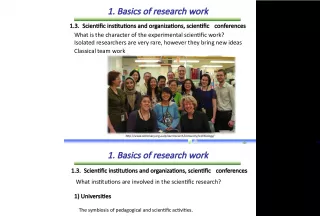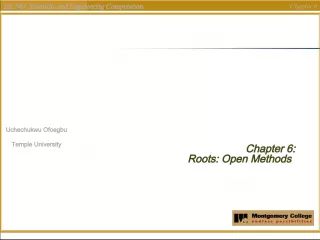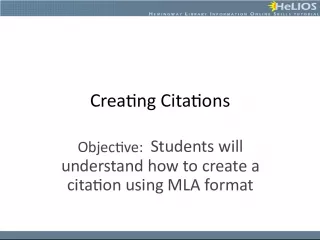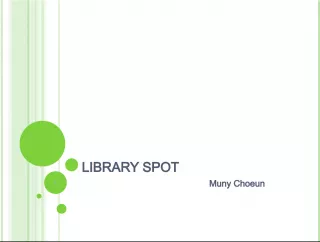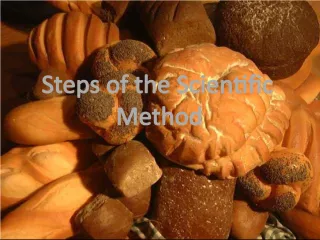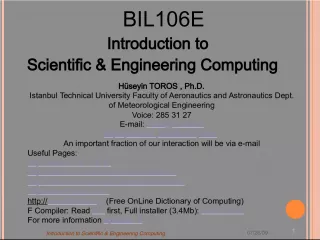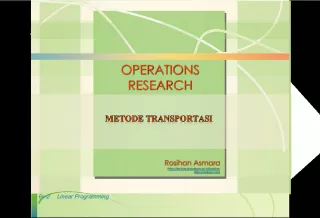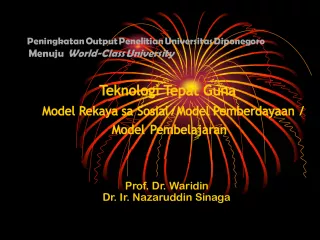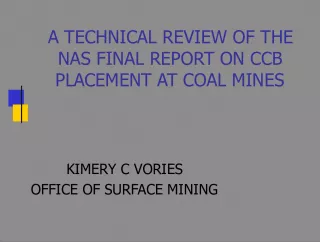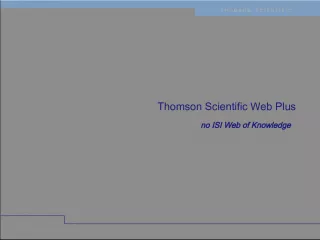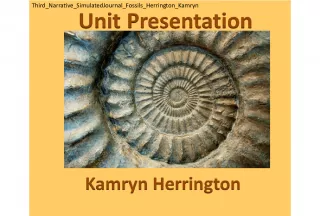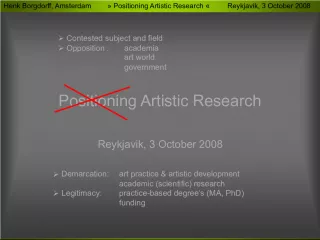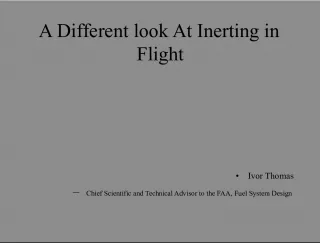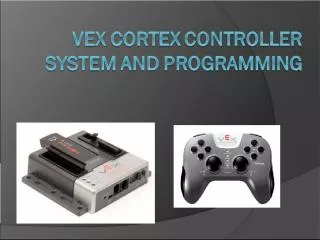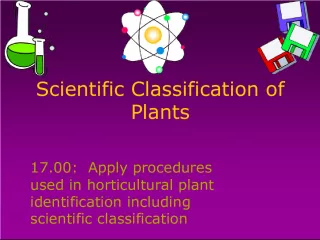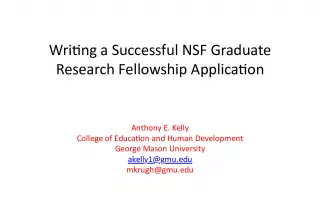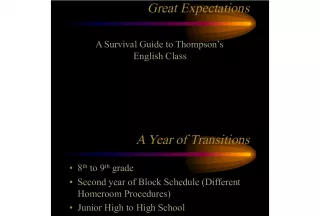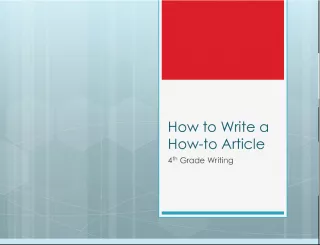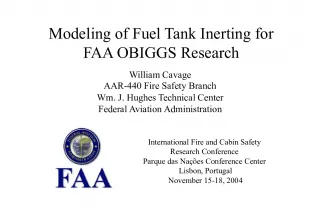Technical Writing Research Methods and Scientific Papers
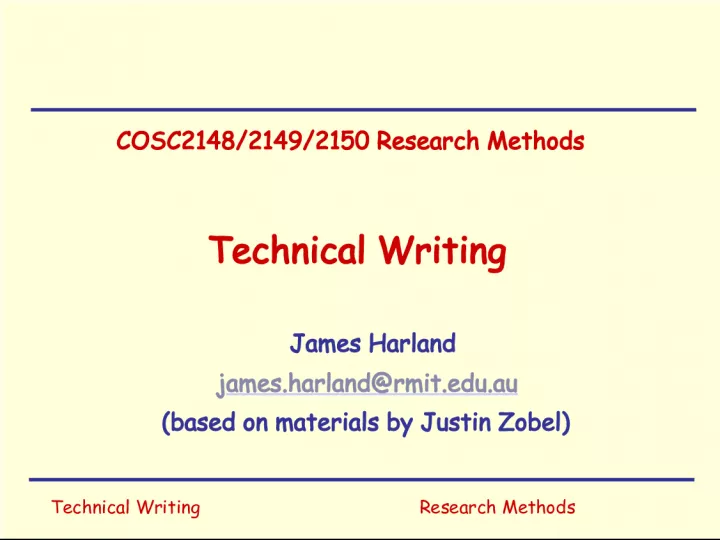

This article discusses the importance of research methods and technical writing in the field of science. It covers the basics of writing and structuring a scientific paper, as well as the role of writing in advancing scientific knowledge.
- Uploaded on | 4 Views
-
 feest
feest
About Technical Writing Research Methods and Scientific Papers
PowerPoint presentation about 'Technical Writing Research Methods and Scientific Papers'. This presentation describes the topic on This article discusses the importance of research methods and technical writing in the field of science. It covers the basics of writing and structuring a scientific paper, as well as the role of writing in advancing scientific knowledge.. The key topics included in this slideshow are technical writing, research methods, scientific paper, writing tips, scientific knowledge,. Download this presentation absolutely free.
Presentation Transcript
1. Technical Writing Research Methods COSC2148/2149/2150 Research Methods Technical Writing James Harland james.harland@rmit.edu.au (based on materials by Justin Zobel)
2. Technical Writing Research Methods Overview What is a scientific paper? Why write a scientific paper? How to write a scientific paper? Bad Examples Tips
3. Technical Writing Research Methods What is a Scientific Paper? Position statement in an ongoing debate about properties of the universe Framework for reasoned arguments and supporting evidence Incremental addition to scientific knowledge The role of writing in science is to Define concepts, start debate Provide basis for common understanding Clearly describe elements of research: hypotheses, experiments, proofs.
4. Technical Writing Research Methods Why write a scientific paper? (1) Communicate new ideas State basic concepts Explain ideas Describe and justify hypotheses Critical history (not a catalogue) of the area Compare and contrast with work of others Broad results Implications
5. Technical Writing Research Methods Why write a scientific paper? (2) Present outcomes of research Define fundamentals State the hypothesis Describe experimental method and results structure Show results and proofs Critically analyse outcomes State corollaries and ramifications (Keep but don't publish: code, output, logs, notebooks ...)
6. Technical Writing Research Methods Combining these aims Explain and justify the idea Show enough results (but no more) Focus effort on communication Observe ethical constraints Subjective investigation, objective report Establish priority
7. Technical Writing Research Methods Content Clear statement of new knowledge Reader needs to Understand the main result Know what makes it useful, new, distinct Reproduce experiments Have proof of claims and theorems Do this and no more! (Consider only what the reader needs, not what you feel like saying)
8. Technical Writing Research Methods Reader doesn't need ... Opinion presented as fact, unsupported claims (Java is clearly superior to C++) Essays (The Web is a vast social experiment made possible by technological developments and economic development ... ) Discussion of dead ends and ideas that didn't work (unless they illustrate something) Jokes, amusing pictures, etc. Material not relevant to the topic Complaints (My supervisor didn't tell me I should ... )
9. Technical Writing Research Methods Organisation Hierarchical, not linear, for different readers: Not interested discard quickly Curious want main idea In general area want results In specific area must understand detail Many papers written for the last class only! Components (not necessarily headings): abstract, introduction, survey, main body, summary, bibliography, appendices
10. Technical Writing Research Methods Front matter Title, authors, maybe supervisors, affiliation, addresses, date. Abstract: 50-200 words Concide, precise, specific Statement of main aim and result Self-contained, written in accessible language No references
11. Technical Writing Research Methods Introduction Include: Description of the area and topic Hypothesis Results and outcomes Ramifications Exclude: Evidence Detail Jargon
12. Technical Writing Research Methods Survey Relate new work to published results Knowledge on which new work builds Knowledge that new work extends or corrects If early in the paper: Sets scene, contrast with new results that come later If late in the paper: Can show other results in your notation, making comparisons easier
13. Technical Writing Research Methods Main Body Sections should contain a single clear thread of ideas Include: Definitions Algorithms Description of test data Experimental method Summaries of experimental results Theorems & proofs Analysis of results
14. Technical Writing Research Methods Main Body Exclude unnecessary detail: Too many graphs Uninteresting data Secondary or trivial proofs Programs and code Project logs can be used to record information not kept in the paper
15. Technical Writing Research Methods Main Body Create a story-like flow Discuss results as they are presented (don't separate results and discussion) Consider how concepts will be developed: Chain: describe previous solutions and then new one Hierarchy: overview first, then details Example: start with a typical case to illustrate Complexity: start with a simple case, then a more complex one
16. Technical Writing Research Methods Summary and/or conclusions Main results draw themes together Implications of results Limitations of results Avenues for further research Acknowledge sources of funding and sources of feedback (if not done earlier)
17. Technical Writing Research Methods Back matter Bibliography: List of articles referred to in the paper Only refer to relevant papers that you have read Provide sufficient detail for the reader to find it Appendices: Details of proofs of secondary results Detailed experimental results Code (if brief and exemplary) for tricky algorithms Most papers don't need appendices
18. Technical Writing Research Methods Writing a paper Sketch out the paper: section headings, lists of points in each section, lists of references Carefully define the basics Describe algorithms, experiments, results Write survey Fill in holes Write conclusions. Write introduction & abstract. Revise, revise, revise, revise, revise, revise, revise, ... Edit for flow, layout and style.
19. Technical Writing Research Methods Writing a paper Write uncritically. Brainstorm. Don't get frozen keep writing, even if you have to delete it later Don't worry about formatting until later on. Revise critically I used to think about my sentences before writing them down; but ... I have found that it saves time to scribble ... whole pages as quickly as I possibly can... Sentences thus scribbled down are often better ones than I could have written deliberately - Charles Darwin
20. Technical Writing Research Methods Why define carefully? Eliminate ambiguity A clear problem statement ensures that you have a common basis of understanding with your supervisor Make explicit: What is proposed How it will be evaluated What the argument (thread of reasoning) will be
21. Technical Writing Research Methods Getting started Choose a well-written paper that presents a similar kind of idea or result, then imitate its structure Criticise the structure first. For example Is the ordering reasonable (of sections and within sections)? Are the sections linked together? Where is the survey? Is there a non-technical introduction?
22. Technical Writing Research Methods Making Progress Start writing early (allow at least 1/6 of project time to write up) Set aside blocks of time Carry your work with you (mentally and physically!) Set yourself problems, reexamine them between other tasks, keep the concepts active Don't expect steady progress, but do keep chipping away Adjust your commitments in response to progress
23. Technical Writing Research Methods Writing can help research The process of writing can show where more work is needed: Definition of basics: find concepts are not clear Abstract description of an algorithm: can see an optimisation Complexity analysis: difficult proof needed Graph of results: need more experiments or code Write critical sections while there is ample time to do more research
24. Technical Writing Research Methods Bad Example 1 From an Australian company's functional specification for a database system: Development of these linkages is likely to be further down the timeline than the implementation of the main system in the near future. The system should be developed with the end users clearly in view. The system must therefore run the gamut from simplicity to sophistication, robustness to flexibility, all in the context of the individual user. From the first tentative familiarisation steps, the consultation process has been used to refine the requirements by continued scrutiny and rigourous analysis until, by some alchemical process, those needs have been transmuted into specifications. The aim of these specifications is to distill the quintessence of the existing system.
25. Technical Writing Research Methods Bad Example 2 From an honours report: Grep is no doubt simple, but inevitably slow, especially if all the documents are to be matched. Further the regular expressions used to specify the string pattern desired can be a hurdle! Worst still when just about everything that might go wrong for the day, and Alas! you are presented with a list of maybe 25 matching documents.
26. Technical Writing Research Methods Bad Example 3 From a paper: Query languages have changed over the years. For the first database systems there were no query languages and records were retrieved with programs. Before then data was kept in filing cabinets and indexes were printed on paper. Records were retrieved by getting them from the cabinets and queries were verbal, which led to many mistakes being made. Such mistakes are impossible with new query languages like QIL.
27. Technical Writing Research Methods Bad Example 4 From a paper: We have already seen, in our consideration of what is, that the usual simplified assumptions lead inexorably to a representation that is desirable, because a solution is always desirable; but repugnant, because it is false. And we have presented what should be, assumptions whose nature is not susceptible to easy analysis, but are the only tenable alternative to ignorance (absence of solution) or a false model (an incorrect solution). Our choice is then Hobson's choice, to make do with what material we have viable assumptions and to discover whether the intractable can be teased into a useful form.
28. Technical Writing Research Methods Bad Example 5 "It was a dark and stormy night; the rain fell in torrents--except at occasional intervals, when it was checked by a violent gust of wind which swept up the streets (for it is in London that our scene lies), rattling along the housetops, and fiercely agitating the scanty flame of the lamps that struggled against the darkness." --Edward George Bulwer-Lytton, Paul Clifford (1830) http://www.bulwer-lytton.com/
29. Technical Writing Research Methods Problem Areas Economy, vigour, clarity, ambiguity. Unnecessary text & words, long words, waffle Purpose of text is not thought out, or text is obselete Inadequate revision Informality Qualification Claims without qualification users demand -> users may want Excessive caution: might somehow be possible Double negatives: Not necessarily unaffected
30. Technical Writing Research Methods Problem Areas Pomposity, supposedly scientific writing The execution of the algorithm is such that it completes in an unusually short space of time The algorithm is fast Lack of examples. Background too brief All assumptions should be made explicit Many writers expect far too much of their readers
31. Technical Writing Research Methods Problem Areas Jargon, notation Technical terminology is needed for discussion of technical concepts Technical terminology excludes less informed readers Dense technical writing is hard to read Lack of consistency Notation, mathematics, terminology Layout, format Captions, figures, tables
32. Technical Writing Research Methods Problem Areas Poor motivation, flow, organisation Explain the purpose, value, importance of each element (section, theorem, algorithm, definition) Link adjacent material so that it flows Sloppy titles Choose the right keywords Should be short but informative Ragged sentences Simple structure, single topic Thoroughly revised.
33. Technical Writing Research Methods Hypotheses and tests Construct an explicit hypothesis state clearly what you are testing Provide an intuitive explanation Propose in detail a methodology for testing the hypothesis Use proof, modelling, simulation or experiment, or any of these elements in combination Aim to convince the reader use a persuasive form of test A model is not equivalent to an experiment Interpret the results for the reader
34. Technical Writing Research Methods Hypotheses and tests Experiments should be reproducable and reliable Describe the data Describe the testbed Explain the parameters Take observations: gather material to clarify your ideas Make tests: independently verify the correctness of the ideas. Keep records: software used, data used (or its location), experiments tried.
35. Technical Writing Research Methods Conclusion Keep it simple Sketch and brainstorm first Outline section by section, with a list of contents Fill in holes and refine Revise, revise, revise, revise, revise, and revise some more! Get supervisor/s and colleagues to read drafts Allow plenty of time
